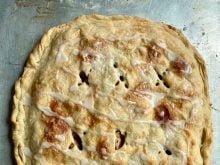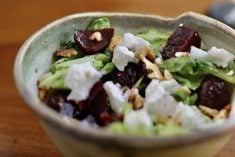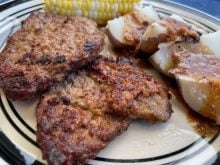With the end of the Second World War, the rationing of foods, building materials and consumer goods lessened. Farming incomes improved and families on the Prairies began to rebuild their lives. As metals were no longer needed for the war effort, farm equipment, vehicles, pots and pans, and appliances began to come onto the market.
On the farms, money was first put into new farm equipment to mechanize the seeding and harvesting of crops. As crops improved and electricity became available, either through an on-farm generator or provincial power installation, labour-saving devices were added to the homes.
Farm equipment manufacturer Massey-Harris had an ad in the Oct. 14, 1948, Western Producer for a Massey-Harris deep freezer. This may have been a marketing ploy to help farmers who had bought new farm equipment to get in their wife’s good graces by purchasing a new freezer as well.
Quick freeze locker plants saw a tremendous growth following the war. There were more than 250 such plants across the Prairies by 1947. Most were in average-size towns, serving the town and surrounding rural residents.
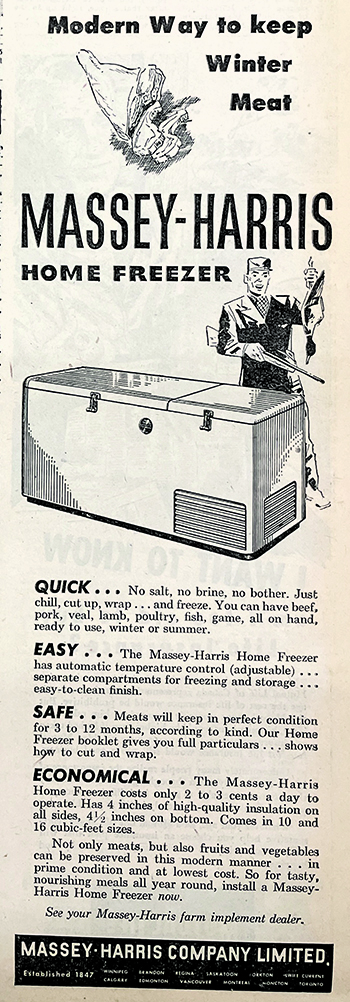
The plants provided hanging, cutting, wrapping, and quick-freezing services for meat and home packaged fruits and vegetables. Individual lockers were rented to families to store their frozen foods. Freezing was a much easier way to preserve the fresh garden produce than hot, laborious canning. The disadvantage of the locker plant was it required a trip to town to add and retrieve foods. When available, an in-home freezer was a great time saver as the food could be frozen fresh picked and retrieved as needed.
Emmie Oddie, a former University of Saskatchewan extension home economist and now a farm wife and mother, began writing columns in The Western Producer in 1947. In July that year, she wrote about the Moose Jaw Co-operative’s Locker Plant and how to make use of it. She also gave information about the proper techniques for preparing and freezing fruits and vegetables.
In her Aug. 26, 1948, article Oddie talked about the many new prepared mixes that could now be bought for making cakes and desserts. She provided instructions for making pie pastry, cake and biscuit quick mixes at home.
Oddie felt the mixes were great time savers especially during harvest, “when a pie or cake is needed almost every day”.
She also quoted a study from the Canadian Dietetic Association Journal that compared commercial mixes with home-made mixes. The home-made mixes were cheaper and the home-made pastry mix was a better quality.
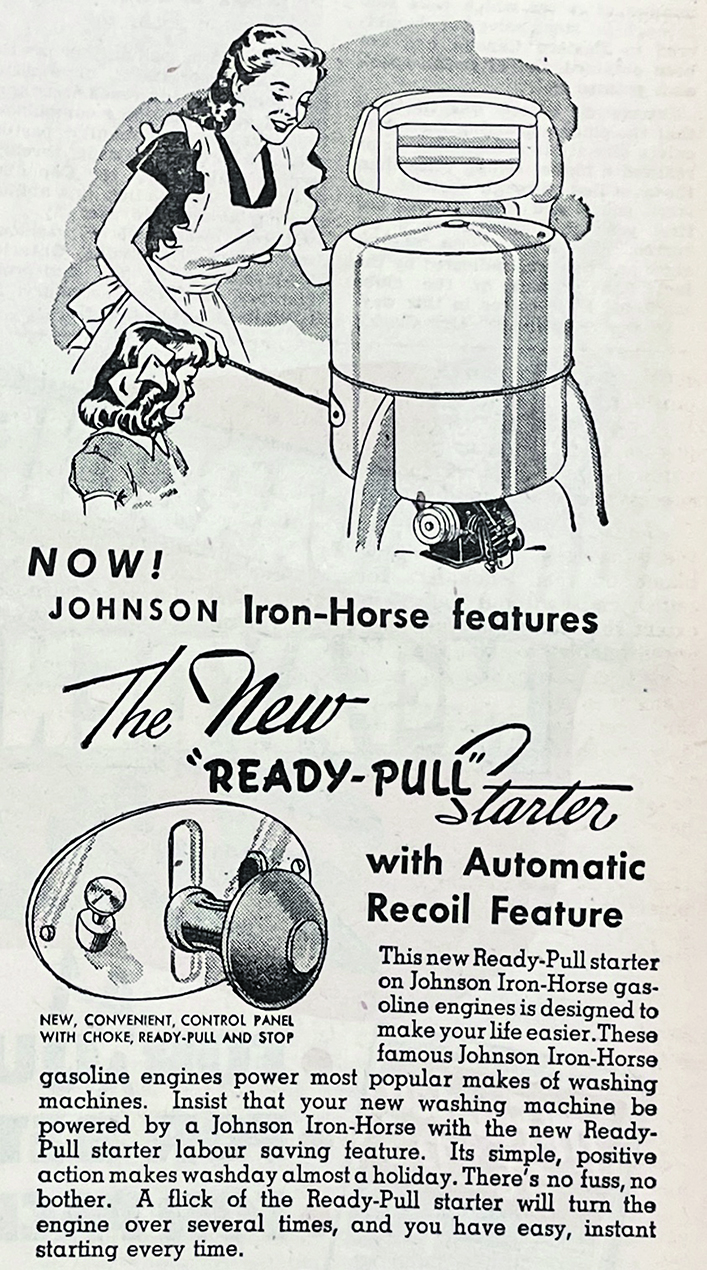
Cake Quick Mix
Yields mix for six cakes.
- 11 c. cake flour, sift before measuring
- 7 tbsp. baking powder
- 5 tsp. salt
- 2 1/3 c. vegetable shortening
- 7 1/3 c. white sugar
Mix the ingredients together with a pastry blender until cornmeal consistency. Emmie recommended using a large dishpan to mix up this recipe in. Store in a covered container at room temperature.
Note: Flour was sifted before measuring to remove lumps in the flour and to add air to make the baking lighter.
Spice Cake
- 2 1/2 c. cake quick mix
- 1 tsp. cloves
- 1 tsp. cinnamon
- 1/4 tsp. allspice
- 1/2 c. milk
- 1 tbsp. molasses
- 1 egg
Place unsifted cake mix in a bowl. Add cloves, cinnamon and allspice, stir to combine with flour mixture. Add two-thirds of the milk and beat two minutes. Add remaining milk, unbeaten egg and vanilla. Beat two more minutes and turn into well-greased and floured pans. Bake layer cakes at 375 F and loaf cakes at 350 F for 20 – 25 minutes or until a toothpick comes out clean.
Orange Cake
- 2 1/4 c. cake quick mix
- grated rind of one orange
- 2 tbsp. orange juice
- 6 tbsp. water
- 1 egg
- 1/2 tsp. orange or lemon flavouring
Mix and bake the same as for a spice cake.
Ice Box Cookies
These cookies use the new convenience of an ice box or refrigerator to spread out the cookie making over a couple of days. The home economists of the Consumer Section, Dominion Department of Agriculture developed these time-saving recipes. They stated that Ice Box Cookies could be made in a quarter of the time as rolled and cut cookies. They are perhaps not always as perfect in shape as a cookie cutter cookie but they are every bit as delicious. Feb. 3, 1949.
Butterscotch Slices
Yields three to four dozen cookies.
- 1 1/3 c. all-purpose flour, sifted
- 1 1/2 tsp. baking powder
- 1/4 tsp. salt
- 1/2 c. shortening
- 1/2 c. brown sugar, packed
- 1/4 tsp. vanilla
- 1 egg, beaten
Mix and sift flour, baking powder and salt, set aside. In a second bowl, cream shortening and sugar together, add vanilla and beaten egg, mix well. Stir in dry ingredients. Shape in a roll, two inches in diameter, wrap in waxed paper, and chill thoroughly. Cut in 1/8-inch slices, place on a greased or parchment paper lined baking sheet and bake in a hot oven 400˚F for four minutes.
Date Roll Ups
Yields: 4 dozen cookies.
- 1 1/2 c. chopped dates
- 2/3 c. water
- 2/3 c. granulated sugar
- 1/2 c. chopped nuts, optional
- 2/3 c. butter
- 1 1/4 c. brown sugar, packed
- 2 eggs, beaten
- 2 2/3 c. all-purpose flour, sifted
- 1/2 tsp. salt
- 1/2 tsp. soda
Cook dates, sugar and water until thick, about 10 minutes. Add nuts and cool.
Cream butter, add sugar and mix well together. Add beaten eggs and beat well. Add sifted dry ingredients. Chill thoroughly. Divide mixture into two parts. Roll separately into two rectangles about 1/4-inch thick. Spread with date filling and roll, as a jelly roll, into two long rolls. Wrap in waxed paper and chill. Cut into 1/4-inch slices. Bake in a moderately hot oven 375 F for about 10 minutes.
Note: Waxed paper is a semitransparent paper with a thin coating of wax on both sides. Because of its moisture proof and non-stick characteristics, it used to play a major role in the kitchen for covering food and lining baking pans. In recent years, it has been replaced by aluminium foil, parchment paper and plastic wrap.
In the Jan. 2, 1947 paper Alice Denhoff wrote that a war bride from New Zealand had shared with their group the New Zealand tradition of serving scones (pronounced to rhyme with fauns) at every meal and in-between too with a cup of tea for a snack. Home-made berry or orange jam was often served with them.
New Zealand Scones
These scones are excellent. Yield 12 scones.
- 1 1/2 c. flour, sifted before measuring
- 4 tsp. baking powder
- 1/2 tsp. salt
- 1 tbsp. sugar
- 1/2 c. bran
- 3/4 c. cold table fat (drippings, butter or shortening)
- 2 eggs
- 1/2 c. top milk (this would have some cream in it)
- 2 tsp. sugar
Mix flour, baking powder, salt, sugar and bran together. Cut in the fat. From the eggs, reserve a small portion of egg white, beat the remaining whites and yolks and add to the flour mixture along with the milk. Stir together until dough forms, turn out onto a floured board and knead lightly. Roll out to 3/4- inch thickness. Cut into triangles. Mix the held back egg white with a little water and brush the top of scones and sprinkle with sugar. Bake at 450 F for 10 to 15 minutes.
Cinnamon Toast
- 8 slices bread, 1/4 -inch thick
- 4 tbsp. butter
- 1 tsp. vanilla
- 4 tbsp. icing sugar
- 3 tsp. cinnamon
Cream butter and vanilla together. Combine icing sugar and cinnamon. If desired remove crusts from bread. Toast bread, while hot spread with butter mixture and sprinkle with sugar mixture. Place in oven until sugar melts. Cut into narrow strips to serve.
The writer Alice Denhoff suggests that this is elegant enough to serve with tea. As a child, I loved cinnamon toast for breakfast. Jan. 2, 1947.
A Sept. 22, 1949, article noted many farmers were leaving the farm for the winter. Older farmers would travel to get away from the cold, often going to British Columbia. Younger families would move to town to avoid dealing with blizzards or snowy and muddy roads when trying to get their children to school.
Betty Ann Deobald, one of The Western Producer’s TEAM Resources columnists, will write a monthly column for the next year examining rural life in each decade of the last century.




